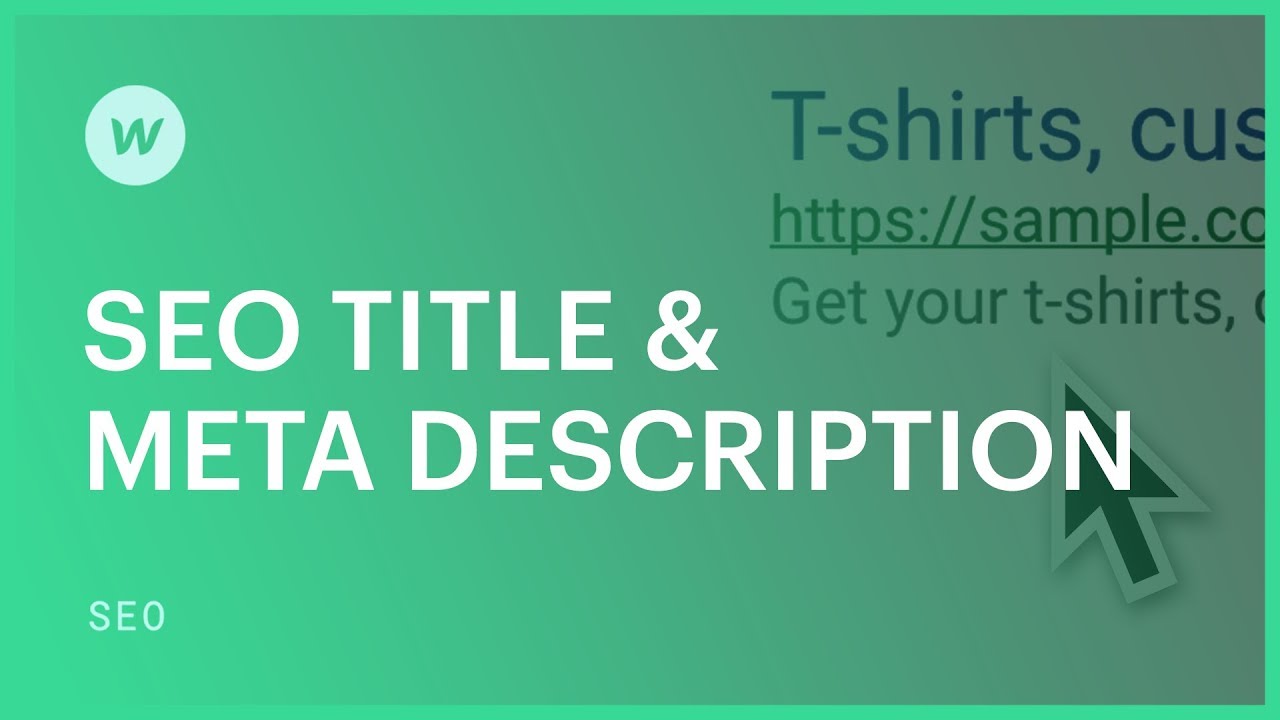Improving your website’s visibility on search engines to enhance traffic quantity and quality is known as Search Engine Optimization (SEO). You have the option to customize the heading and description that appear in search results when someone searches for your website or a keyword relevant to your site’s content, or you can deactivate search engine indexing for specific static pages on your site.
Important Note: Don’t forget to publish your website after making changes to your SEO settings to make them effective. If you still see outdated SEO settings in search results after publishing your website, refer to the FAQ and troubleshooting section below.
This tutorial covers the following:
- How to configure SEO settings
- How to set dynamic SEO options
- How to adjust sitemap indexing
- FAQ and problem-solving
Configuring SEO settings
Key Point: SEO headings and meta descriptions perform best when they are specific and relevant to the page’s content. It is recommended to have unique SEO settings for each page as global settings are not possible, and SEO settings are page-specific.
You can manage 2 SEO details:
- Heading – the text that usually appears as the title of the page in search results. It’s advisable to keep the heading under 60 characters.
- Meta portrayal – the text that typically shows below the page’s title in search results. Meta descriptions can influence users to click through to your page, especially if the description aligns with the page’s content. While there is no specific character limit for meta descriptions, search engines may truncate lengthy descriptions.
Reminder: Search engines sometimes present a text snippet from the page that matches the search query rather than using the meta description.
To view and manage a page’s SEO settings, go to Pages panel > Page settings > SEO settings.
Pro Tip: On localized sites, you can customize your page-level SEO settings. Find out more about localizing SEO settings.
Remember to publish your site after updating SEO settings for the changes to take effect.
Special Note: Avoid stuffing these fields with keywords to manipulate search results. Google penalizes deceptive practices.
Setting dynamic SEO options
On Collection pages, you can establish a template that all Collection pages will follow for their SEO headings and meta descriptions. By doing this, every Collection item will automatically create its SEO heading and meta portrayal based on the pattern you define. For instance, a Collection of blog posts can utilize dynamic data in the SEO settings to extract content from the post’s name or title Collection field.
Similar to static pages, you can modify this information by navigating to Pages panel > Page settings > Open Graph settings. To populate your SEO settings with dynamic data from a Collection field, click Add field.
Remember to publish your site after updating SEO settings for the changes to take effect. Modifications in your site’s title tag and meta portrayal may take time to get indexed and appear in search engine results pages (SERPs).
Pro Tip: On localized sites, you can customize your page-level SEO settings. Learn more about localizing SEO settings.
Setting sitemap indexing
You can deactivate the indexing of a static site page with the Sitemap indexing toggle. By toggling this, the page will not be indexed by search engines and will be excluded from your site’s sitemap. You can only turn off indexing with the toggle if your site’s auto-generated sitemap is enabled. Learn more about turning off indexing for site pages.
FAQ and problem-solving
Why doesn’t Webflow offer site-wide SEO title tags and meta descriptions?
Individual titles and descriptions for each page provide better SEO results and enhance the user experience.
Why doesn’t Webflow support SEO meta keywords?
Most major search engines do not use meta keywords for ranking purposes. Find out why Google does not consider the keywords meta tag for web ranking.
How can I personalize my SEO settings for different regions?
Refer to our guide on customizing page-level SEO settings for different regions or understand how Webflow manages localized SEO at the site level.
Help! I adjusted my SEO settings, but search engines display an incorrect heading or portrayal.
Ensure that you have published your site after updating the SEO settings. Following site publication, changes to your site’s meta heading and description may take time to be indexed and appear in SERPs. You might need to wait for search engines to re-index your content and reflect the changes in their search results. Although requesting Google to recrawl your site is an option, no guarantees on speeding up the process exist.
It is essential to note that even after indexing your updated SEO content, Google ultimately decides the display text. While Google should not display an outdated version of your SEO content, it may show snippets of body text from your page if they better match the search query intent. Explore this resource for more insights on why Google may present a different meta portrayal for your site.
- Include or eliminate Workspace spots and members - April 15, 2024
- Centering box summary - April 15, 2024
- Store a site for future reference - April 15, 2024
